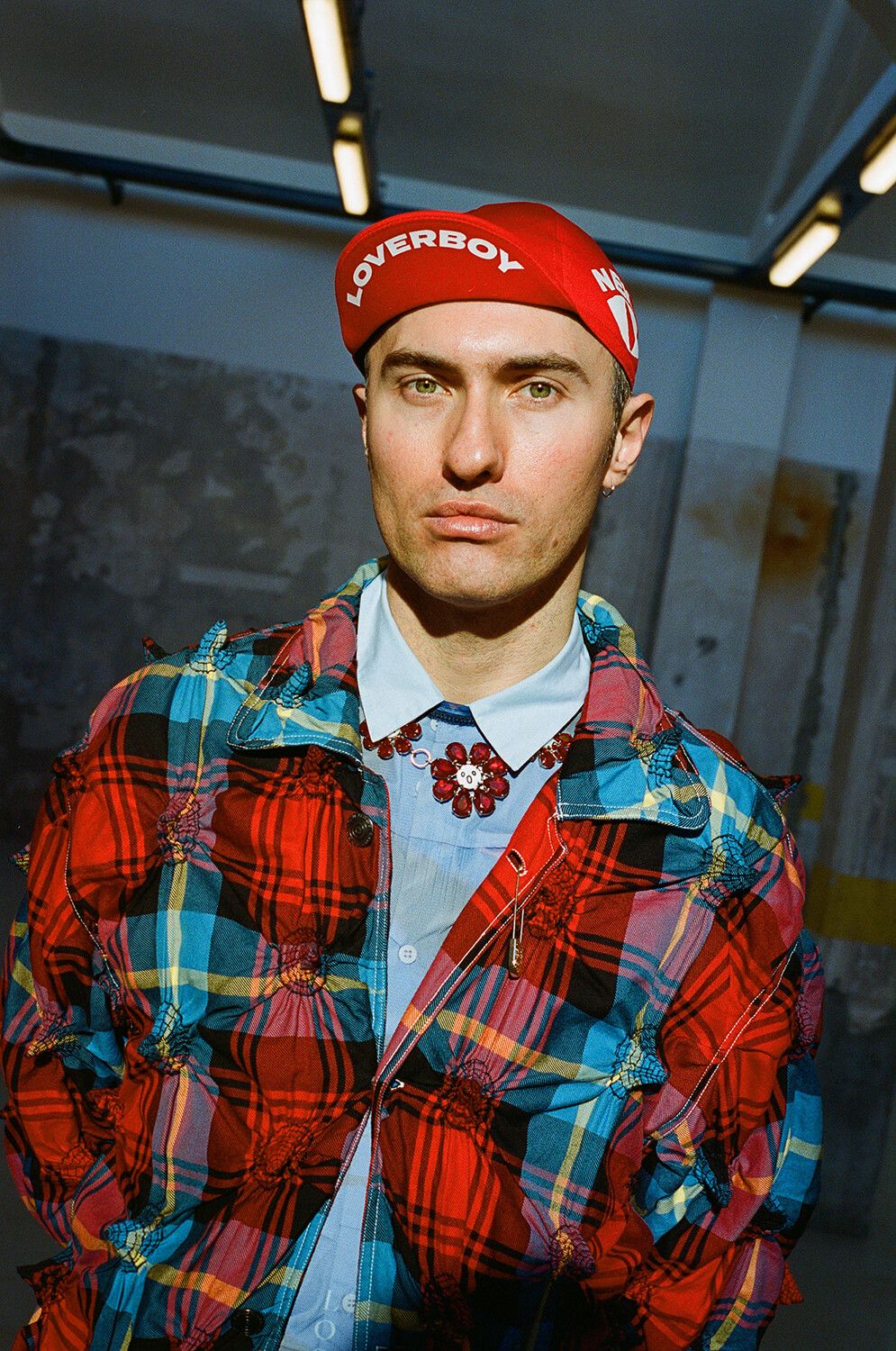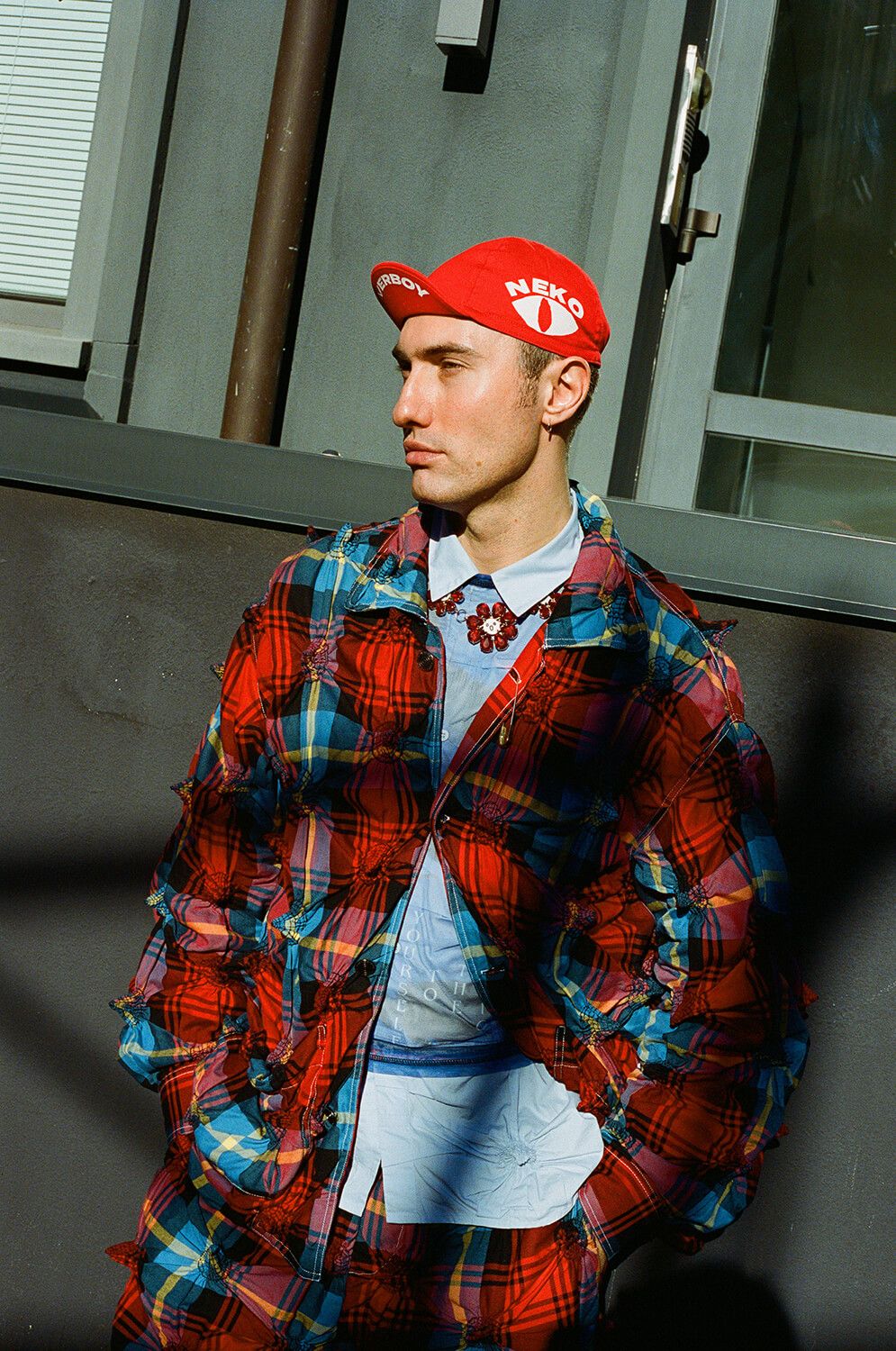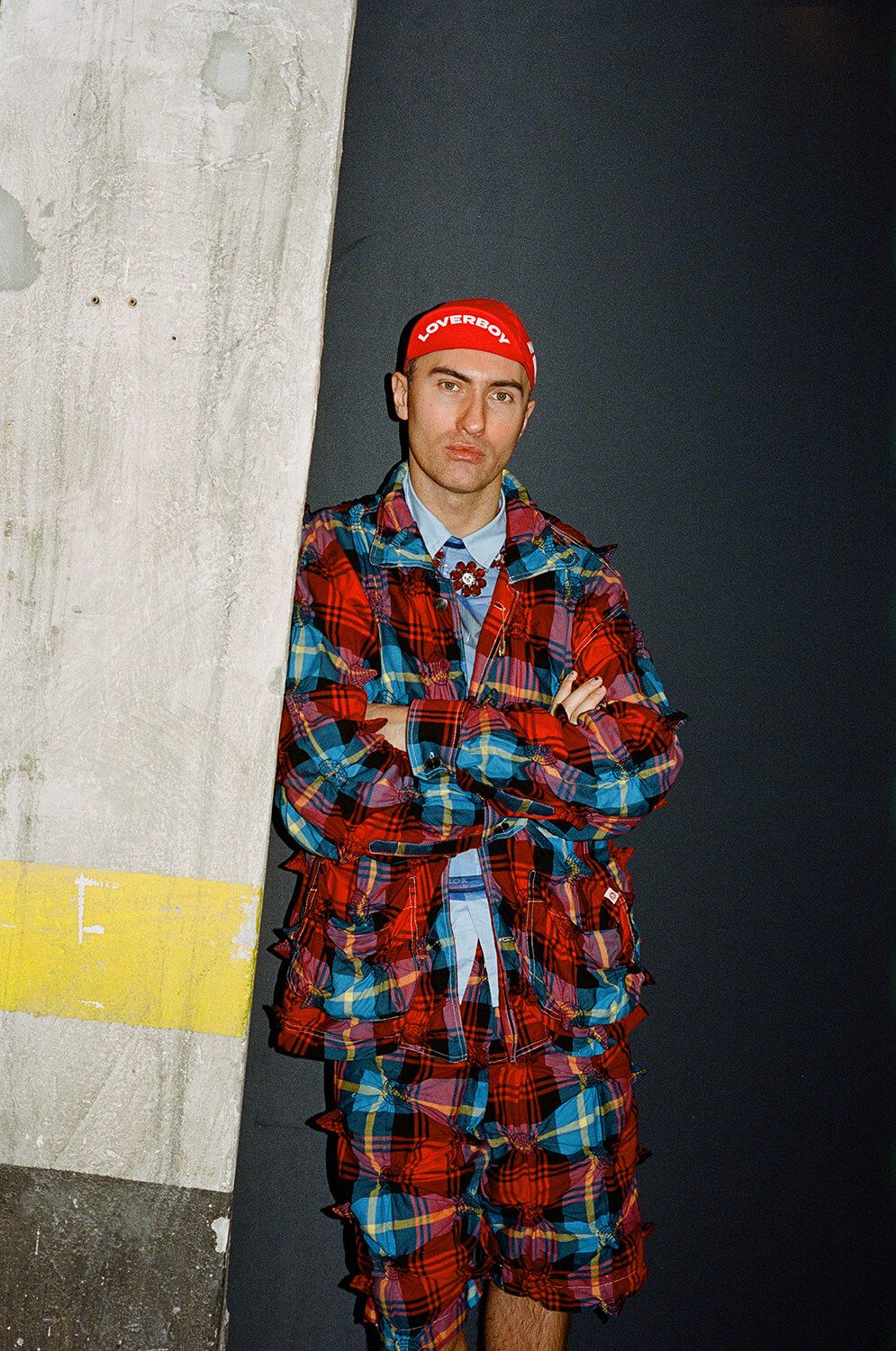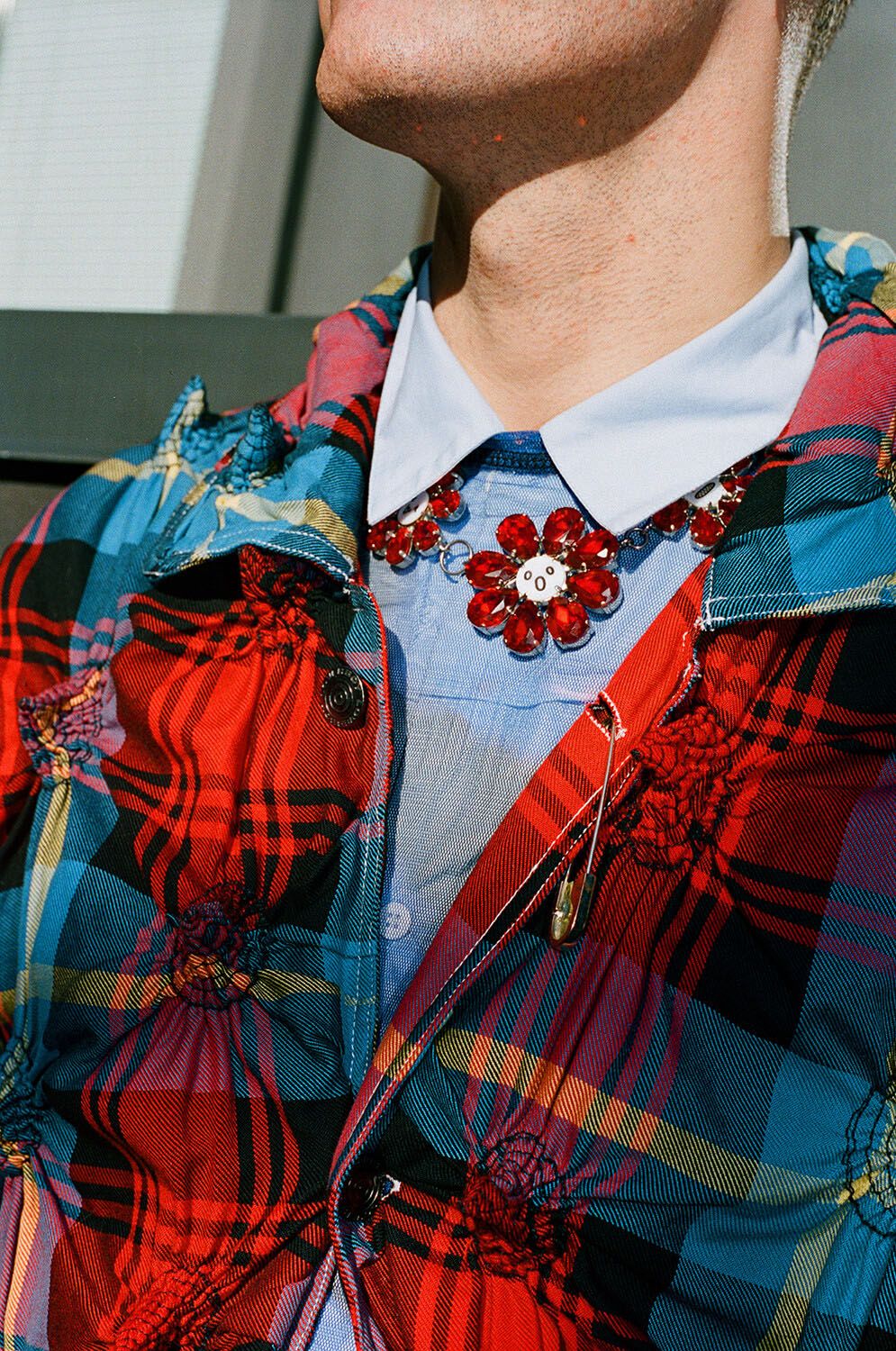



«I sort of stopped going out this much», Charles Jeffrey says when we ask him how life is going. «Covid, the business… I mean, I still go out every now and then just to see musicians. Then on the weekends I just chill, play Pokémon [Pokèmon Shield to be specific, ed]. My job is big now». Surprising words for a designer like Charles Jeffrey, whose fame has emanated precisely from London's exuberant and wild nightlife. In recent years, his brand has become one of the cult appointments of London Fashion Week, but in recent times, the designer has felt out of place in the British capital, and so he decided to look elsewhere for his next show. After a bit of research, Milan turned out to be a «prime ground to put my roots in, be subversive, be anarchic». The choice is not only due to the search for «a bigger city, a bigger fashion week» but it is also about deeper issues for Jeffrey. «I also think there’s an affinity with being Scottish, wanting to leave the UK and going somewhere else», he explains. «I feel Scottish people and Italian people are very similar». But Milan i salso a city «steeped in mythology and tradition», a place where Jeffrey felt at home, finding elements close to his sensibility in Marni's subversive, textured luxury: «I liked what Francesco Risso was doing and the landscape he was setting out here and I just thought there was a lot of empty space that I can kinda be myself in. […] When I went to Paris, there were people that I really admired like Walter Van Beirendonck, Rick Owens, Craig Green, Dries Van Noten and other younger designer… it was a different feeling. Paris will always be the top, the lead and it’s kind of interesting to see that people go into it and do what they want to do. But I think that Milan is having a resurgence».
The show for the FW23 collection was titled Engine Room - a verbal choice that evokes so much of that working class world Jeffrey is fond of («I worked in many different jobs, I didn’t come from a high-income family», he says) as much as Milan's industrial past that so impressed him during his first visits to the city. But Jeffrey's vision extends far beyond urban boundaries to his community: «What I really want to do is get into the heart of it, create something long-term instead of seasonal. I really want to enjoy the romance aspect of it that I think has phased out of the community. What exists today frankly doesn’t have much color to it, and I’d like to contribute more to a human and toned-down representation of the queer scene». But queerness is only one element of Jeffrey's vision, it cannot define his work exclusively: there are other dimensions to his work that are not even strictly business-related. One of these is territoriality, collaboration with the realities of his Scotland, but another equally important side is bringing different cultures together. «I think it needs to be more than business; it should be a cross-pollination where we bring things from Milan to London. The show is for me a very important statement. Especially as me being a Scotsman, there’s also something metaphorical about it. I want to represent something in a space in this new dynamic political space».
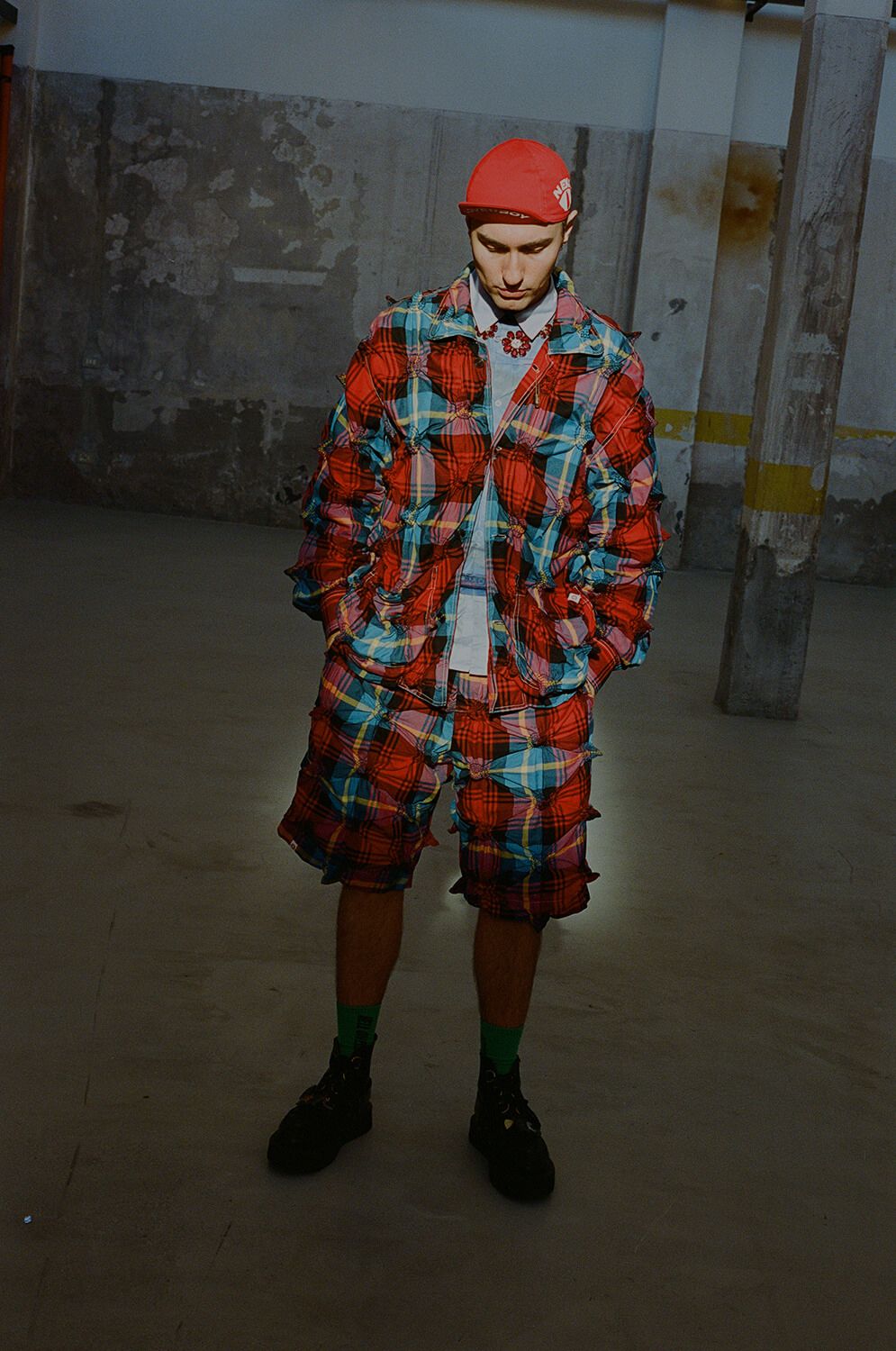


«We want to bring story-telling back to the industry», continues Jeffrey, but none of this would be possible without a healthy dose of pragmatic concreteness. When the conversation moves from the upcoming Milan show to the way his brand is developing, vague resolutions turn into tangible things: «You can do a commercial collection on the back of your hand, but if you want to invest and have ideas you should do it long scale, like over two or three years». Everything comes from the raw material, the fabric, which is manipulated, recontextualized, used to tell the story of Jeffrey's Scotland, which moves out of the stereotype of tradition and embraces the contemporary world without diluting its identity, but rather enriching it in the process. «We need to stay consistent about what we do», he explains. «There’s something interesting about recontextualizing one fabric over and over again. The tartan for example gets reinvented in new ways every season. Now that the brand is in a good position, we can do things like hiring a fabric designer who just works on fabric long-scale, like this Dries van Noten fabric designer who designs it like two years before the collection, for example». The idea is exciting, and it certainly hints at a technical approach, where there is some ingenuity but that is utterly devoid of the snootiness that reigns in fashion. The tartan seersucker, for example, which over time has become one of the brand's best sellers, grew out of a chance experiment. «To me, fashion is a lighthouse, it shines its light on a range of different movements and brands tend to keep shifting themselves in order to stay in the light as much as possible. The thing is, if you stay true to yourself, once the light comes shining back around, it shines even brighter».
In the show on Sunday 15, all these elements will converge, bringing together the visual aspects to the aural and narrative ones to the collection that will be shown to the audience. A kind of multidisciplinarity that prompted Jeffrey to produce a musical album «that helped with clothing sales» but also a series of objects for the home made by collaborating with a wide variety of artists. Jeffrey's approach is very hands-on: «The great thing about being the owner and creative director of your own business, is that you can do whatever you want. […] I find it really rewarding to know everything about each part of my business, it’s my baby, so there’s less delegating on the creativity side». At the moment this very company is expanding, a microcosm growing along with its creator, who is always investigating new avenues ranging from collaborating with Scottish knitters to working with Italian industries to expand the business. The goal always remains one: «It’s about not rushing things; we want to make good fucking stuff».
Credits:
Photographer: Pavel Golik
Interview: Lorenzo Salamone
Production nss factory


































.jpg)

















